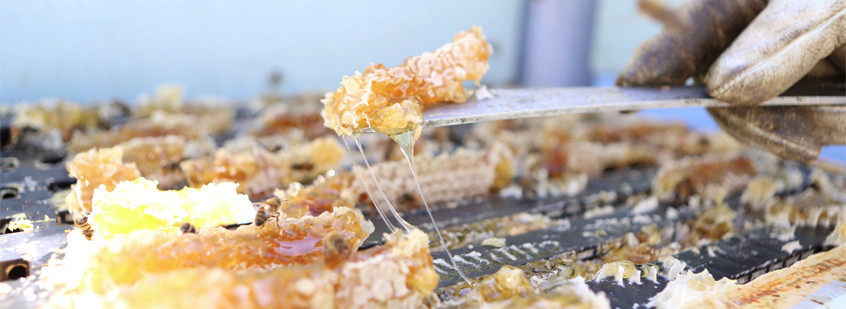Already a popular export of New Zealand, medicinal manuka honey may soon join the list of Australian-made products pending the outcome of a new study.
Created by the European honey bee after having fed on manuka or tea tree nectar, the value of this honey has risen significantly for New Zealand producers ever since one of its key components, methylglyoxal, was found to be a major component of this honey.
Due to its antibacterial properties, New Zealand manuka honeys have since become a popular topical treatment for cuts and burns, as well as for more serious chronic (slow-healing) wounds.
Increasing global demand for the product has led Australian researchers to turn to our locally-produced manuka honey as a potential alternative.
A team led by Professor Liz Harry from the ithree institute at the University of Technology Sydney (UTS) seeks to discover which species of Australian manuka trees (Leptospermum trees) results in the most therapeutically active honey.
“When it comes to supplying honey that can be used in topical treatments, New Zealand has limited ability as a result of its small size as well as the fact that there are only two species of manuka tree that grow there,” Harry said. “Given Australia has a more diverse set of these tree species and much larger land for producing, we’re well positioned to become a leading supplier of medicinal honey.”
Jointly funded by the Rural Industries Research and Development Corporation (RIRDC), Horticultural Australia Limited, Capilano Honey and Comvita, the research is to be conducted by Harry alongside co-investigators from the University of Sydney and the University of the Sunshine Coast.
While there is a clear motivation to research manuka honeys on an industry level, to provide beekeepers with higher returns for their honey, Harry also points out a growing interest from a human health perspective, as evidence indicates that its specific properties prevent bacteria from becoming resistant to it.
Harry told Wild: “We’re currently seeing a huge rise in resistance to traditional antibacterials (antibiotics), which makes the unique properties of manuka honey of particular interest to researchers, and in their effectiveness in the clinic. While we already understand a little about how these properties work, we still don’t fully comprehend what’s happening at a molecular level.”
Other than the methylglyoxal, the component provided by manuka flowers, honey is also known to have several others attributes that make it strongly antibacterial, including its high sugar percentage (honey is around 80 per cent sugar) and other factors provided by the bees themselves, such as glucose oxidase. This enzyme produces hydrogen peroxide, commonly known as bleach, which is also antibacterial.
This combination of factors has resulted in a natural dressing that can be used to treat even chronic wounds.
“Another benefit of this honey is that it does a surprisingly good job at reducing scar formation,” Harry explained. “As a frequent camper and bushwalker, a manuka honey-based wound gel is a staple of my medical kit.”
Harry’s research may therefore prove of benefit for beekeepers and bushwalkers alike, breathing new life into Australia’s honey production industry and simultaneously making medicinal honey prices more competitive as a result.
Even better, she said, it gives us more reason to conserve our hardest workers: bees.
“Through their pollination activities, bees help to produce a third of the world’s food supply in addition to the honey we collect, so we need to look after them and the forests that provide their nectar.”
Australia may soon become the leading producer of medicinal honey should the results of new research prove fruitful.



